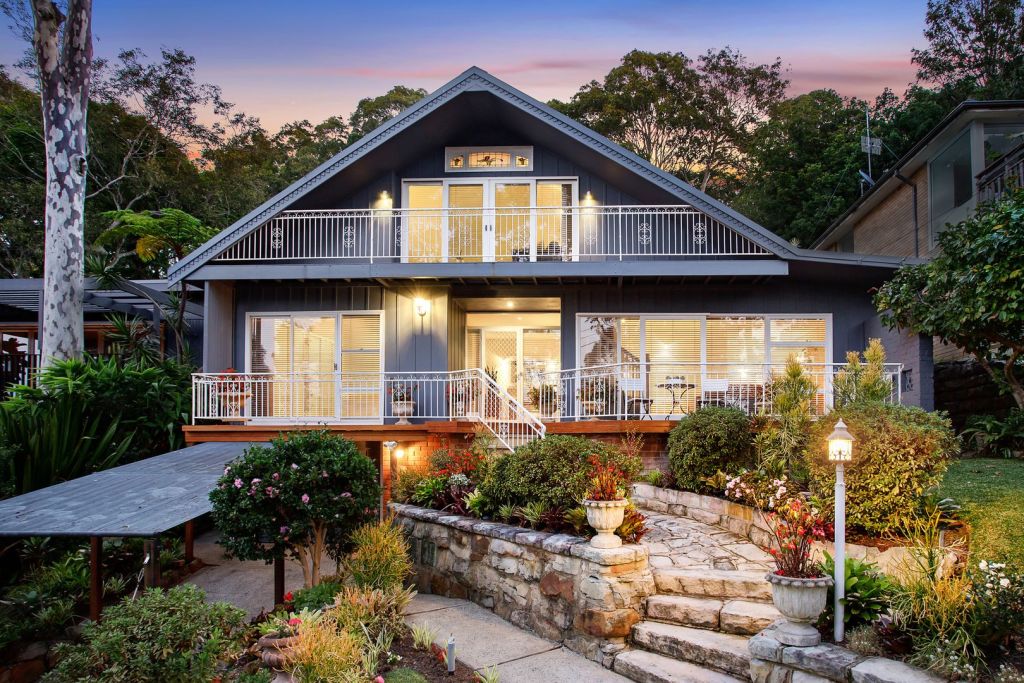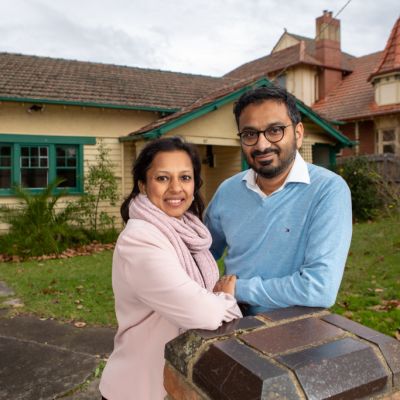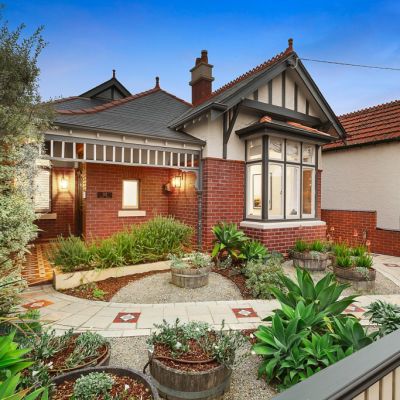Stamp duty on properties soars over 15 years in Sydney, Melbourne Brisbane amid NSW tax-reform plans

The city where stamp duty costs are rising most has been revealed, with Brisbane home-buyers facing the biggest jump in taxes on housing of any capital over the past 15 years.
But the highest dollar value stamp duty bill for an average house can be found in pricey Sydney, Domain research found, where the NSW government is pushing ahead with plans to scrap the impost for a broad-based land tax.
Economists agree that large upfront stamp duty bills discourage home-owners from moving house for a new job or to downsize once their children have left home. The task of tax reform poses a political challenge.
In Sydney, for example, many homes would have to be owned for at least 15 years under a land-tax system before an owner could match the upfront stamp duty cost, Domain senior research analyst Nicola Powell found.
“The current cost of property transaction can prohibit people from moving homes to suit their life with the belief that they need to stay in the property for a period of time to ‘claw back’ the cost of stamp duty,” Dr Powell wrote in a submission to the government arguing in favour of a land tax.
The NSW government hopes to give buyers the choice between paying stamp duty upfront or paying annual land tax. Once a property has been converted to the land-tax system, all future owners of it would have to pay land tax instead of stamp duty.
Last Friday the government released on a progress paper that found public support for change through the consultation period, especially from first-home buyers, although some retirees questioned the benefits for them. It found home ownership could rise 6 per cent, home prices could fall 3 to 4 per cent, and first-home buyers would be able to save a deposit and purchase sooner.
The deal was sweetened further on Monday when the NSW government announced first-home buyers would get a $25,000 grant to help them enter the market, replacing the existing stamp duty concession.
In the ACT, a shift from stamp duty to land tax has been underway for some time, but other states have so far been unwilling to take the hit to their revenue despite the opportunity for big picture economic reform afforded by the COVID-19 pandemic.
As house prices rise, stamp duty on average homes has soared. In Brisbane, the average house has seen a 270 per cent stamp duty increase to $13,467 over the decade and a half to 2020, Dr Powell found.
Melbourne rose 200 per cent in the same time frame to $51,232, while Hobart jumped 181 per cent to $20,971 and Sydney lifted 169 per cent to $51,637.
Stamp Duty change by Major City 2005 vs 2020
| Sydney | Melbourne | Brisbane | Adelaide | Perth | Hobart | Canberra | |
| 2005 | $19,172 | $17,105 | $3,640 | $13,342 | $15,366 | $7,458 | $14,852 |
| 2020 | $51,637 | $51,232 | $13,467 | $25,556 | $20,768 | $20,971 | $28,448 |
| $ increase | $32,465 | $34,127 | $9,827 | $12,214 | $5,401 | $13,514 | $13,597 |
| % increase | 169% | 200% | 270% | 92% | 35% | 181% | 92% |
Source: Domain stratified median house prices and stamp duty calculated based upon each state and territory thresholds. Figures are rounded to the nearest dollar.
Dr Powell said Sydney had the highest median house price of the capitals and rising stamp duty “adds considerable stress to the reality of entering the NSW property market”.
Under the proposed change, buyers could be better off if they own a property for the medium term, choose land tax, and move house after a decade or more.
In the inner-west council area, for example, the average home-buyer pays $76,649 in stamp duty. But, if they paid land tax over 10 years of ownership, they would spend only $41,635, the research found.
In Mosman council, where average stamp duty is $226,455, even after 20 years of ownership the land-tax payments would total only $177,828.
Upfront cost of property transaction vs years of property tax payments
| Bayside Council | Inner West Council | City of Parramatta Council | Northern Beaches Council | Mosman Municipal Council | Canterbury Bankstown Council | ||
| Stamp Duty | $56,505 | $76,649 | $51,005 | $98,745 | $226,455 | $38,535 | |
| Cumulative Property Tax | 5 yr | $15,572 | $19,688 | $15,383 | $17,622 | $37,034 | $13,160 |
| 10 yr | $32,863 | $41,635 | $32,459 | $37,232 | $78,606 | $27,720 | |
| 15 yr | $52,097 | $66,137 | $51,451 | $59,090 | $125,313 | $43,866 | |
| 20 yr | $73,530 | $93,531 | $72,610 | $83,492 | $177,828 | $61,805 | |
| 25 yr | $97,450 | $124,196 | $96,221 | $110,772 | $236,917 | $81,772 | |
| 30 yr | $124,186 | $158,562 | $122,606 | $141,308 | $303,441 | $104,035 | |
Source: Domain. Stamp duty is calculated based on the current NSW threshold using median prices for each LGA as of December 2020. Annual property tax accrued is calculated based upon the median unimproved value across the geographical boundary of the LGA. The annual tax is calculated based on the NSW property tax proposal of $500 plus 0.3 per cent of the unimproved land value each year factoring in a 2.5 per cent increase in land value per year.
The irony that the model could allow buyers to pay less tax on medium-term homes was not lost on independent economist Saul Eslake.
“I give a great deal of credit to [NSW Treasurer Dominic] Mr Perrottet for being willing even to talk about this subject let alone indicate he’s prepared to move in that direction,” Mr Eslake said.
“[But] the transition mechanism he’s proposing is the wrong one — because people will choose the option that makes them pay the least amount of the tax, the loss of revenue will be greater.”
Mr Eslake preferred a model where all properties moved to land tax but anyone who had paid stamp duty within the last few years would get a credit for the tax they had already paid.
For example, someone who had paid $100,000 in stamp duty and owed $10,000 a year in land tax would get 10 years exempt from land tax.
He was part of a review for the Victorian state government that recommended moving away from stamp duty. Victorian Treasurer Tim Pallas last month made the opposite choice, lifting stamp duty for higher-value homes, but not ruling out reform in years to come.
Mr Eslake said although economists disliked stamp duty, it can be politically difficult for state governments to lose upfront revenue, or to remove a tax paid by only a small proportion of the population who are moving house and impose one on the much broader category of all home-owners.
He also praised the work of former Telstra boss David Thodey, who reviewed NSW taxes and made a fairness argument — that someone who moves often for work makes a larger contribution to fund services than someone who stays in their home for a long period.
EY Oceania chief economist Jo Masters said stamp duty was one of the least-efficient taxes, and land tax one of the most efficient.
Shifting to land tax could also increase turnover of housing stock and boost work for conveyancers, sellers of soft furnishings and the DIY industry, she said.
One risk of the NSW model is that a property that has already transitioned to land tax may field less demand because buyers can’t choose which tax they pay, but overall she said it was a realistic model.
“It’s incredibly difficult to transition because it’s such a big revenue generator for states,” she said.
“Over time, it’s a good thing for the state budget because it’s easier to forecast and it’s more stable, but the actual transition period is more costly.”
We recommend
We thought you might like
States
Capital Cities
Capital Cities - Rentals
Popular Areas
Allhomes
More










